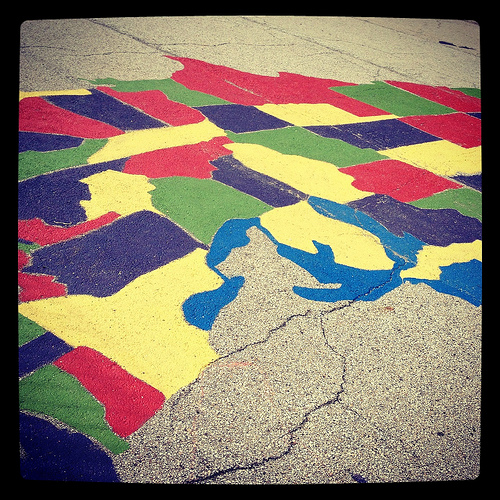
Conservation Unit Part II: Family Night
[flickr id=”8074871147″ thumbnail=”medium” overlay=”true” size=”original” group=”” align=”none”]
Last week, I shared Part I of my 8th grade unit on conservation, which was an annotated list of activities that would take place in Social Studies, Language Arts, and Science. This week, I have Part II of the unit, which is a plan to involve family and community members in the work of the students. We spend a lot of time in our program discussing how to create a community that supports and advocates for the school. Finding creative ways to connect parents to the classroom is a great way to do this, as it fosters a positive relationship between parents and teachers and is another way to communicate the work the students are doing. Our activities touch on many aspects of recycling, but the family night allows for the students to spend a month truly collecting materials to see what an impact it can have.
[flickr id=”8075240887″ thumbnail=”medium” overlay=”true” size=”original” group=”” align=”none”]
During our month long unit on conservation, family and community members will be invited to participate in a community wide recycling project. During the first week of school, students make a plan for collecting recyclables at home and at school. Students will create informational flyers about their recycling project that they will distribute to their families. The flyers will explain the details of the project, list which types of objects we will be collecting to be recycled, and will note that recyclables can be dropped off at the school every Monday and Friday for the next month. Students will also be given large paper grocery bags to use to collect their home recyclables each week.
Over the course of the month, our eighth grade students will create short presentations on their project that they will present to K through 7th grade classrooms. At the end of the presentation, the teams will ask the classroom if they would like to participate in the project. Each week, the teams of students will collect recyclables from their designated classrooms. All recyclables will be stored at the school until the end of the month. Students will sort through the collected recyclables and prepare them for our culminating event.
[flickr id=”8074862153″ thumbnail=”medium” overlay=”true” size=”original” group=”” align=”none”]
At the end of the month, we will invite the families of our students and the younger grade level students to participate in a recycling fair. We will display all of the items we collected in the gymnasium, where the eighth graders will weigh them in order to announce the total pounds of each type of item collected for recycling (i.e. paper, plastic, aluminum, and glass). Students will also have on display their solar powered robots, their greenhouses built from plastic bottles, their informational posters on landfills, and their recycled paper project. Each eighth grade team will then present their culminating proposal for a renewable energy that they believe would benefit their community. After their presentation, the teachers will lead small groups in building artistic responses to the recycling fair by using the recyclable items collected. The artworks created will be displayed in the hallway and in the school’s community garden.
Next week, I’ll share Part III of the unit, which is a lesson on landfills in Chicago. Have a great week!
[flickr id=”8074869063″ thumbnail=”medium” overlay=”true” size=”original” group=”” align=”none”]
